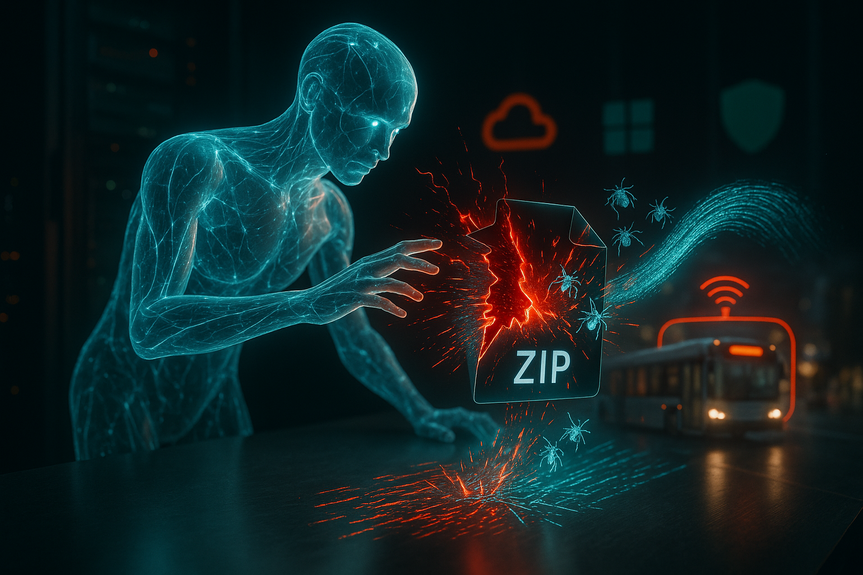publisher monetization with Google AI tools boosts revenue and saves time by automating ad operations
Need to grow ad revenue without adding headcount? This guide shows how publisher monetization with Google AI tools unlocks higher CPMs, faster insights, and safer ad experiences. Learn the new features in Ad Manager, AdSense, and AdMob, and get step-by-step actions to turn live moments and direct deals into profit.
Publishers work hard to create content. But ad operations take time. Reviewing ads, building reports, and fixing issues can slow your team. Google now brings new AI features to Ad Manager, AdSense, and AdMob that remove manual work and open new revenue paths. You can boost brand safety, get instant reports by asking a question, and get help on demand. You can also sell live streams at the moment of peak attention and run direct deals that act like programmatic.
This article breaks down what changed, why it matters, and how you can put it to work this quarter. When you approach publisher monetization with Google AI tools, think in three lanes: protect, measure, and act. Protect with smarter brand safety, measure with natural-language reports, and act with live bidding and direct deals that pay.
Why AI now matters for ad revenue
AI does the busy work fast and at scale. It learns from your decisions. It highlights risky ads before users see them. It pulls the exact report you need without manual setup. It answers support questions in seconds. That means your team can focus on content, inventory strategy, and partnerships.
Three benefits stand out:
Fewer bad ads and fewer manual reviews, thanks to learning from your own block/allow decisions
Faster decisions with reporting you can trigger with simple questions
Quicker fixes and onboarding help, which is vital for small teams
Automate ad quality without losing control
Google’s new AI brand safety tool learns from the choices you make in the Ads Review Center. It looks at your approvals and blocks. It then finds similar ads that you likely do not want. Soon, it can block them automatically.
How the learning helps you
The tool goes beyond simple category blocks. It finds patterns in creatives, landing pages, language, and visuals. It turns your past calls into ongoing rules. This protects your audience and advertises your standards to buyers.
Setup steps to reduce noise and keep revenue
Review your recent Ads Review Center decisions. Group them by “block reasons.”
Write a short brand standard memo: list what is always allowed, allowed with limits, and never allowed.
Turn on the AI brand safety features and keep automatic blocking in “suggest” mode for one to two weeks.
Check the surfaced ads daily. Approve the suggestions you trust. This trains the model.
Move to automatic blocking and set alerts for high-risk categories or keywords.
KPIs to watch
Ad complaint rate (should drop)
Block rate vs. CPM trend (avoid over-blocking that lowers fill)
Page RPM and session RPM (should hold or rise)
Time spent reviewing ads (should fall week over week)
Common pitfalls
Over-blocking can hurt revenue. Start with suggestions, not instant auto-block.
Ignoring landing page quality. Check where ads send users, not just the creative.
Not updating standards. Refresh your memo monthly as new categories appear.
Ask for answers, not spreadsheets: Generative AI reporting
You can now ask Ad Manager questions in plain language and get a ready-to-use report. You do not need to build a query by hand. You do not need to pick every dimension first. You ask, it returns the view. Then you drill down.
Questions you can ask
Which ad units had the highest CPM last week?
What were my top geos by revenue yesterday?
Where did viewability drop in the last 7 days?
Which buyer had the most timeouts during the live event?
How to turn insights into action
Set a daily “morning pulse” ask: “Show top five ad units by RPM and fill.”
Set a weekly “growth check”: “Compare CTV vs. mobile in-stream CPM month to date.”
Set a campaign “health scan”: “List deals with delivery under 80% pace.”
Save each insight as a report, then schedule email delivery to stakeholders.
Metrics to connect to business goals
CPM and RPM: Price and yield
Fill rate and coverage: Demand strength
Viewability and VCR: Quality signals buyers value
Timeout rate and error rate: Tech stability
When the team gets fast answers, it makes fast tests. Over time, that builds a culture of evidence. That culture lifts revenue.
Instant help for small teams
The new AI-powered Help guide in Ad Manager, AdSense, and AdMob gives you quick support for onboarding and troubleshooting. It points you to the right docs. It explains the meaning of an error. It suggests the next action you should take.
Practical uses
Fix a misfired tag: ask what the error code means and how to resolve it
Confirm policy: ask if a certain ad category is allowed on a kids section
Speed up setup: ask for the steps to connect a new app to AdMob mediation
This help matters most when time is short, like during a live event or a campaign launch.
A step-by-step plan for publisher monetization with Google AI tools
This 90‑day plan helps you launch the new features and prove impact without risk.
Days 1–14: Protect and learn
Draft your brand safety memo and share it with sales and content teams.
Enable AI brand safety in suggestion mode. Review surfaced ads daily.
Create three core gen-AI reports: daily pulse, weekly growth check, and campaign health scan.
Document baseline KPIs: RPM, fill, viewability, complaint rate.
Days 15–30: Automate and iterate
Switch to automatic blocking for clear-cut categories after a trial period.
Start morning standups with a 5-minute “report ask” and action list.
Use Help guide to resolve two long-standing issues on your backlog.
Prepare your live CTV tech checklist if you run streams.
Days 31–60: Monetize live moments
Set up CTV Live-biddable in Ad Manager for your next event or partner stream.
Define ad pod rules, timeouts, and failovers. Test SSAI and measurement.
Build a sales one-pager for advertisers about your live reach and audience segments.
Create a real-time command center using generative reporting for the event day.
Days 61–90: Scale direct demand
Launch Buyer Direct pilots with two to five key agencies or brand buyers.
Activate cross-publisher frequency optimization if you run a network.
Consolidate billing and share real-time reports with buyers to build trust.
Compare revenue from open auction vs. live vs. direct. Rebalance inventory.
By the end of this plan, you will have proof that your approach to publisher monetization with Google AI tools saves time and grows revenue. You will also have cleaner ad quality and happier buyers.
Make live moments pay with CTV Live‑biddable
Live events spike attention. A game in overtime or an award show that runs long can double audience size. Buyers want that reach. In fact, most buyers plan to grow programmatic live CTV spend this year. Google’s CTV Live-biddable solution helps you sell that attention at the exact moment it happens.
What it enables
Understand live audience size in real time
Expose that inventory to more buyers as it grows
Serve ads reliably during peak load with smarter delivery
Identify content more precisely so buyers can target it
How to prepare
Stabilize your stream: test bitrates, encoders, and SSAI insertion under load.
Set conservative ad timeouts to protect the viewer experience.
Define pod structures (A/B/C breaks) and seat high-CPM buyers first.
Map content IDs so buyers can find your most valuable moments.
Create a backup plan: if an ad fails, show a house ad or a short brand filler.
Publishers who used this approach have moved from manual, slow deals to dynamic, real-time selling without hurting stream quality. That helps you capture peak CPMs when they are available, not after the event is over.
Close the gap with agencies using Buyer Direct
As the market moves toward direct paths, Buyer Direct in Ad Manager gives you the control of reservations with programmatic speed. You keep the agreed delivery and brand safety. You add features like cross-publisher frequency optimization, real-time reporting, and simplified billing.
Why agencies like it
One bill and one view across publishers
Better frequency control reduces waste
Faster reporting builds trust and keeps campaigns on pace
How to run a strong pilot
Pick one seasonal campaign with measurable goals.
Set clear frequency caps across your owned and network sites.
Share a live dashboard for daily check-ins.
Agree on a rapid creative QA flow using the AI brand safety layer.
Hold a midpoint review to tweak pacing and inventory mix.
When the pilot ends, compare outcomes against your standard programmatic PMPs. If frequency waste falls and CPM holds or rises, scale Buyer Direct to more buyers.
Privacy, safety, and performance can work together
Strong ad experiences protect users and keep revenue steady. Use Google’s Protections and policy tools along with AI brand safety to stop fraud and scams. Respect consent and regional rules. Rely more on first-party signals you own, like page context, user session depth, and predicted intent. Then use generative reporting to prove impact with clean metrics.
Technical checklist to ship faster
Ad Manager: confirm version, API access, and role permissions for AI features
Ads Review Center: align categories and keywords with your brand memo
Reporting: define naming rules for saved reports and shared schedules
CTV/live: test SSAI, content IDs, ad pod configs, and timeouts with load
Measurement: verify viewability, VCR, and error tracking in dashboards
Deals: prepare Buyer Direct deal templates and billing contacts
Alerts: set thresholds for block spikes, delivery drops, and error rates
From features to growth: put it all together
You have the tools to protect quality, find insights fast, and sell what buyers want right now. Start with AI brand safety to reduce the bad and save time. Ask daily questions with generative reporting to steer your week. Use Help guide to remove friction. Turn live moments into revenue with CTV Live-biddable. Build stronger, more direct relationships with Buyer Direct.
Teams that center publisher monetization with Google AI tools ship faster, show cleaner inventory, and earn more from the same content. The path is clear: protect, measure, and act. Start today, learn for two weeks, and scale what works for your audience and your buyers.
(Source: https://blog.google/products/ads-commerce/new-monetization-ai-tools-for-publishers-2025/)
For more news: Click Here
FAQ
Q: What new AI features did Google announce for publishers?
A: Google announced updates to Ad Manager, AdSense, and AdMob that introduce three AI tools: an AI brand safety tool, a generative AI reporting tool, and an AI-powered Help guide for instant support. These updates make publisher monetization with Google AI tools simpler by automating ad reviews, generating custom reports, and offering on-demand troubleshooting.
Q: How does the AI brand safety tool learn my publisher’s standards?
A: The tool learns from the decisions you make in the Ads Review Center, using approvals and blocks to identify similar unwanted ads and patterns in creatives, landing pages, language, and visuals. It surfaces ads you likely don’t want and will soon offer automatic blocking while building on existing Protections that help prevent fraud and scams.
Q: What can I ask the generative AI reporting tool, and how does it help?
A: You can ask plain-language questions such as “Which ad units had the highest CPM last week?” or requests for top geos, viewability drops, or buyer timeout counts, and it returns a ready-to-use custom report. That lets teams get faster insights, run daily “morning pulse” checks, and save or schedule reports to turn answers into action.
Q: What is the Help guide and when is it most useful?
A: Help guide is an AI-powered chat in the Ad Manager, AdMob, and AdSense help centers that provides instant onboarding and troubleshooting by pointing to the right docs and explaining error codes. It’s especially helpful for smaller teams or during time-sensitive moments like live events and campaign launches.
Q: How does CTV Live-biddable help publishers monetize live events?
A: CTV Live-biddable helps publishers understand live event audiences in real time at scale, expose growing inventory to more buyers, and serve ads with smarter content identification and more reliable delivery. These capabilities help publishers capture peak attention and let advertisers bid on high-value live moments.
Q: What is Buyer Direct in Ad Manager and what features does it add?
A: Buyer Direct combines the control of traditional direct deals with the efficiency of programmatic technology, offering cross-publisher frequency optimizations, real-time reporting, and consolidated billing. It enables reservations-style deals at scale and provides a more direct path between publishers and advertisers.
Q: What does the recommended 90-day plan for publisher monetization with Google AI tools include?
A: The plan breaks work into phases: Days 1–14 focus on protecting and learning (draft a brand safety memo, enable suggestion mode, and create core gen-AI reports), Days 15–30 automate and iterate, Days 31–60 set up CTV Live-biddable for events, and Days 61–90 pilot and scale Buyer Direct. Following these steps trains the AI, tests live workflows, and provides metrics to compare open auction, live, and direct revenue before scaling.
Q: What KPIs and technical checks should I monitor after enabling these features?
A: Track KPIs such as ad complaint rate, block rate versus CPM trends, Page RPM and session RPM, fill rate, viewability, VCR, and timeout or error rates to balance quality and yield. Also follow the article’s technical checklist: confirm Ad Manager version and API access, align Ads Review Center categories and keywords, test SSAI and ad pod configurations for CTV, and verify measurement for viewability and errors.







